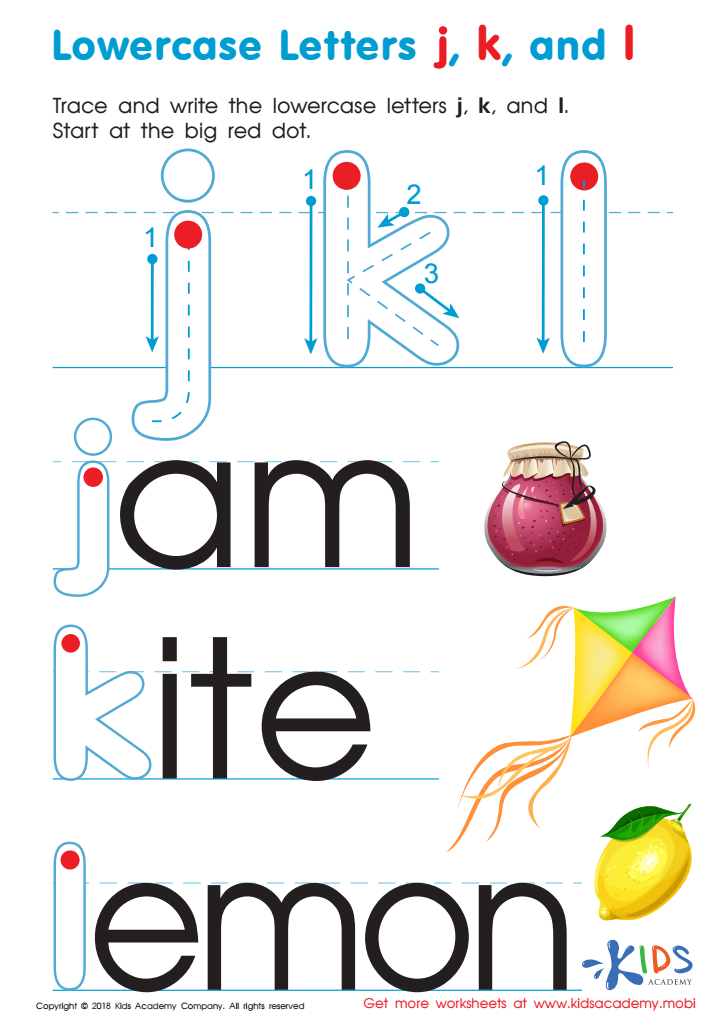Lowercase letter writing Normal Lowercase/Small Letters Worksheets for Ages 4-6
3 filtered results
-
From - To
Explore our engaging "Lowercase Letter Writing Worksheets" designed for children aged 4-6! These thoughtfully crafted resources help young learners master the formation and proper writing skills of normal lowercase letters. Combining fun visuals and interactive exercises, our worksheets provide an ideal blend of education and enjoyment. Students will enhance their fine motor skills and letter recognition through various activities tailored to their age group. Perfect for home or classroom use, our worksheets encourage creativity and promote a strong foundation in early literacy. Download now and watch your child's confidence soar as they learn to write lowercase letters with ease!


Lowercase Letters y z Worksheet


Lowercase Letters j k l Worksheet


Lowercase Letters m n o Worksheet
Lowercase letter writing is crucial for young learners aged 4-6 for several reasons. First, children engage with text predominantly in lowercase in their everyday environments, such as books, signs, and digital screens. Mastering lowercase letters helps them recognize and understand written language in a real-world context.
Writing lowercase letters aids in the development of fine motor skills, as children practice holding and maneuvering writing tools. These skills are essential not only for writing but also for many daily tasks, fostering independence. Moreover, familiarity with lowercase letters lays the groundwork for effective reading and writing, leading to improved literacy skills.
Additionally, lowercase letters are foundational in developing phonemic awareness, as children learn to associate sounds with letters. This practice promotes spelling and enhances vocabulary, empowering children to express themselves more clearly.
Encouraging lowercase writing also builds confidence. As children learn to form and manipulate letters, they experience a sense of accomplishment, which can motivate them to engage more deeply with literacy activities. Ultimately, emphasizing lowercase letter writing equips young learners with the necessary skills for successful communication, academic achievement, and lifelong learning. Thus, parents and teachers should prioritize this essential aspect of early literacy development.
 Assign to My Students
Assign to My Students














